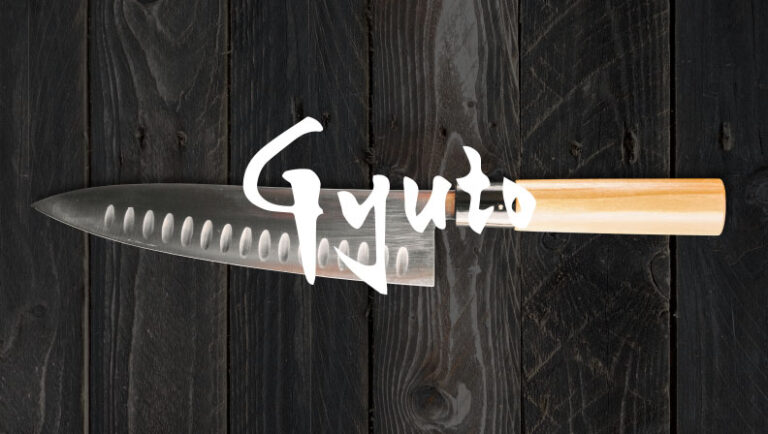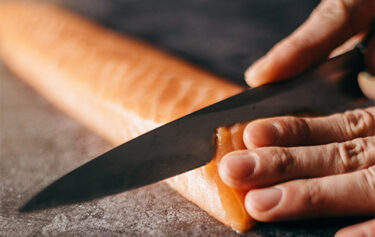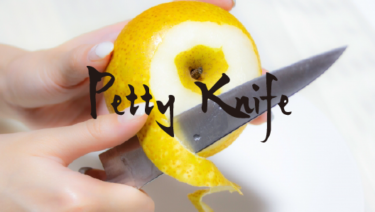A Gyuto knife is a kitchen knife that was introduced to Japan from the western, and is also called Chef’s knife in the US or Europian countries.
Gyuto knives are not only suitable for cutting large chunks of meat, but also for fish and vegetables, making them versatile knives suitable for many foods.
Gyuto knives made with the high skills of Japanese knife makers are very popular around the world.
But, there are many brands that make Gyuto knives, and each brand has many different lengths and materials, making it difficult for many people to choose the best one for them.
In this article, we will thoroughly explain how to choose the right Gyuto for you and introduce popular Gyuto Knives.
Feature of Gyuto Knives
Gyuto knives are long, thin knives with a pointed tip. Gyuto knives have been used mainly by professional chefs, but nowadays they are also being used by the general public.
It is very sharp and suitable for cutting various kinds of food such as meat, fish, and vegetables. It can also be used to cut large pieces of food and for fine work such as muscle cutting.
Also known as Chef’s knife or French knife, it is a useful knife to have as an all-purpose knife.
Gyuto Knives vs Santoku Knives
Japanese kitchen knives have a universal knife called Santoku knife, which is suitable for cooking all kinds of foods such as meat, fish, and vegetables, just like Gyuto.
Gyuto and Santoku knives are very similar, but Gyuto is longer and narrower and has a pointed blade. On the other hand, the Santoku knife is relatively short and wide, with a gently curved tip.
Gyuto is the sharpest knife for cutting hard objects, while Santoku is more suitable for chopping vegetables.
How to Choose Best Gyuto Knives
Let’s take a look at how to choose a Gyuto knife.
Length of the blade
The long blade is a characteristic of Gyuto knives, but there are various types ranging from 18cm to over 30cm.
For general home use, 18cm to 21cm is recommended. If you are a professional cook and often cut large chunks of meat, a longer length is also easy to use.
The larger it is, the heavier it is and the more skill is needed to handle it. The size of your cooking area and cutting board will also be a factor, so be sure to take that into consideration when choosing a length.
Materials
There are many types of materials used for Gyuto knives, but here are the three main types of materials.
Steel
If you want to focus on sharpness, choose a Gyuto knife made of steel. The sharpness of the blade is much higher than that of other materials, and you can cut easily. However, they are prone to rusting and need to be cleaned frequently.
Steel can be further divided into two categories, blue steel and white steel, which can be further divided by number.
Steel can be further divided into two categories, blue steel and white steel, which can be further divided by number.
The smaller the number, the better the effect and the better the sharpness.
| Blue Steel | White Steel | |
|---|---|---|
| #1 | Sharpness:★★★★★ Durability:★★★★☆ Ease of Sharpening:★☆☆☆☆ | Sharpness:★★★★★ Durability:★☆☆☆☆ Ease of Sharpening:★★★☆☆ |
| #2 | Sharpness:★★★★☆ Durability:★★★★★ Ease of Sharpening:★★☆☆☆ | Sharpness:★★★★☆ Durability:★★☆☆☆ Ease of Sharpening:★★★★☆ |
| #3 | – | Sharpness:★★★☆☆ Durability:★★★☆☆ Ease of Sharpening:★★★★★ |
Stainless Steel
If you are looking for a knife that is easy to clean, I recommend a stainless steel Gyuto knife. Stainless steel knives are slightly less sharp than steel knives, but they are rust-resistant and easy to sharpen, making them suitable for beginners and those who do not want to spend too much time on maintenance.
Damascus steel
Damascus steel is a type of steel that offers high sharpness. At the same time, it is a material with a good balance of rust resistance, which is one of the advantages of stainless steel.
The unique wood grain pattern is also the reason why Damascus Gyuto knives are popular and is recommended for those who are particular about design.
This pattern has other advantages besides its appearance. It prevents the food from absorbing into the knife when it is cut, and makes it possible to cut food continuously.
Handle Type
The handle is also important in choosing a Gyuto knife.
There are two types of handles, one integrated with the blade and the other separated, mainly made of stainless steel.
The advantage of the integrated type is that it does not accumulate dirt and is easy to clean. The separate type may accumulate dirt or lose its stability after a long period of use, but it looks luxurious.
Top 5 Japanese Gyuto Knives
Here are the top 5 most popular Gyuto made in Japan.
KAI Gyuto Kitchen Knife Sekimoroku Damascus 180mm Made in Japan AE5204

- The surface of the blade has a beautiful Damascus pattern reminiscent of a Japanese sword, and the handle has an inverted triangle shape that fits the hand well.
- The handle has an inverted triangular shape that fits the hand well.
- The “Suki” and “Edging” techniques developed for finishing have been adopted to achieve a sharp cutting edge.
- The stainless steel mouthpiece and blade are welded together to shut out moisture and rust.
- The handle is made of natural wood that has been specially treated to provide a good fit.
- The handle is made of natural wood that has been specially processed to give it a strong, water- and humidity-resistant texture.
Mac Knife Professional Chef’s Knife, 8-Inch
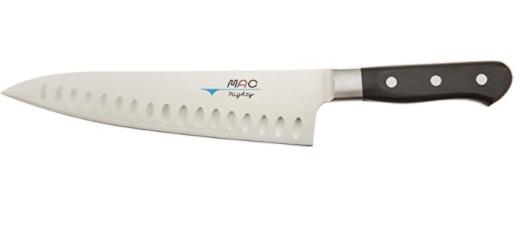
- 2.5mm blade The added dimples allow the knife to move smoothly on even sticky foods such as potatoes, apples, summer pumpkins.
- Lightweight Blade Length – 12.63″
- The handle is made of laminated reinforced wood (Pakkawood).
- Hand washing is recommended. Not dishwasher safe.
Misono UX10 Gyuto No. 711/18cm
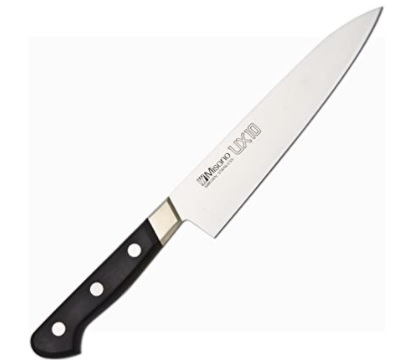
- Manufacturer Model Number: 711
- Back Thickness: 0.08 inches (2.1 mm).
- Weight: 5.5 oz (155 g).
- Size: Blade Length: 7.1 inches (18 cm), Total Length: 12.0 inches (30.5 cm).
- Material: High purity pure stainless steel, Handle: Black reinforced wood.
Takayuki Sakai Hammered Damascus VG10 Interrupt, 33 Layers, Sword-Shaped Santoku 6.3 inches
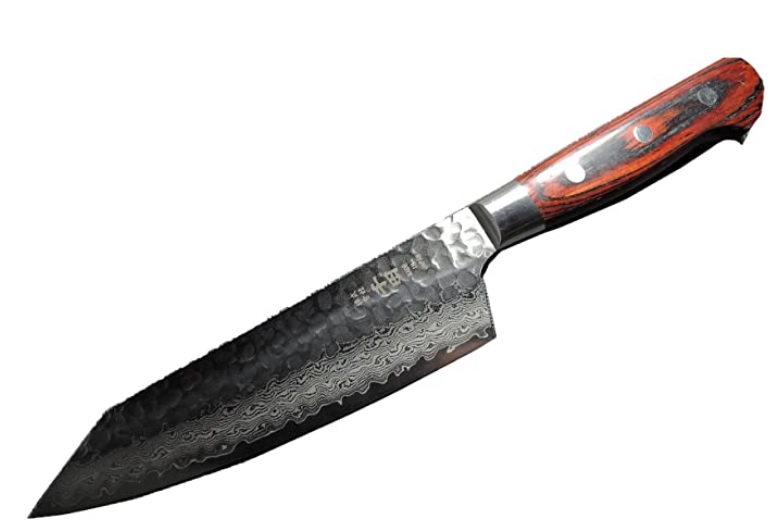
- Damascus knife made by Sakai craftsmen in the town of cutlery.
- The core material is a highly popular V-gold No. 10 special steel.
- The blade is hammered finish. The hammered shape makes the entire blade tightens and improves its sharpness.
Tojiro DP Gyutou – 8.2
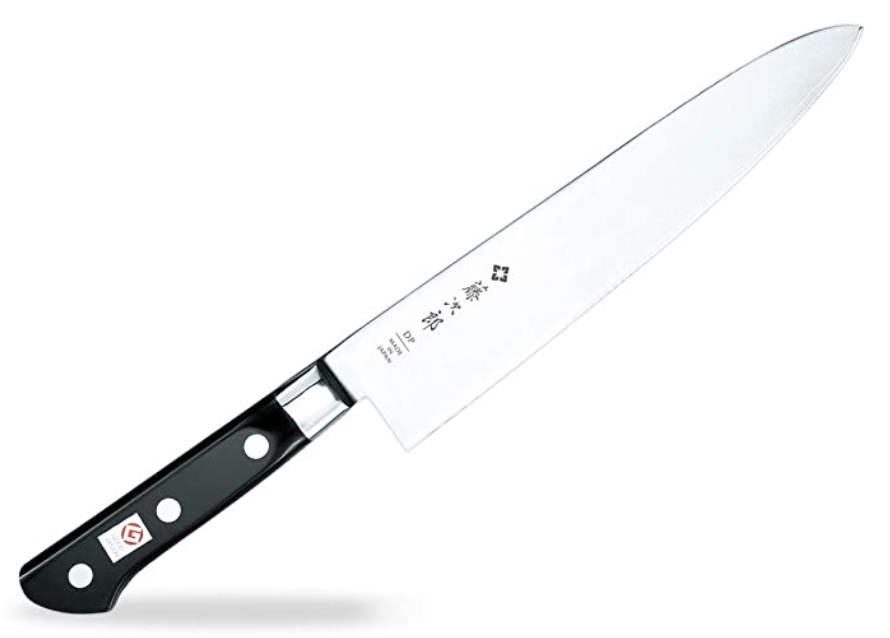
- Stain resistant chef knife
- Usable to both left and right handed users as it’s even edged
- Blade Height: 1.7″ , Blade Length: 8.2″
How To Sharpen Gihei Hap40 Japanese Gyuto Knife
Here is a video on how to sharpen a beef knife. The explanation is in English, so it is easy to understand.
Summary
Gyuto is suitable for cutting various foods such as meat, fish, and vegetables, and is called an all-purpose knife.
Gyuto knives are made with high quality Japanese craftsmanship and are popular all over the world.
Choose the length and material according to your use and cooking environment to find the perfect knife for you.
